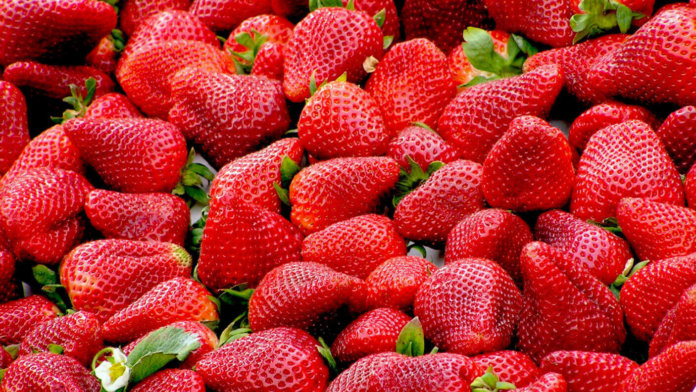It takes more than a green thumb to be a great farmer, super-human vision helps as well. The Institute of Agricultural Machinery at Japan’s National Agriculture and Food Research Organization, along with SI Seiko, has developed a robot that can select and harvest strawberries based on their color. Ripened berries are detected using the robot’s stereoscopic cameras, and analyzed to measure how red they appear. When the fruit is ready to come off the vine, the robot quickly locates it in 3D space and cuts it free. From observation to collection, the harvesting process takes about 9 seconds per berry. Creators estimate that it will be able to cut down harvesting time by 40%. Prototypes are currently being tested in the field with marketable versions expected in the next few years. This artificial agriculturalist was recently recognized by the 4th Annual Robot Award of the Year in Japan. You can see why in the videos below. If we adapt its combination of visual acuity and manual dexterity for other produce, the strawberry harvesting robot could help reshape industrial agriculture.
A typical berry field one square kilometer in size takes about 500 hours to harvest. With its speedy evaluation, the strawberry picking robot could cut this down to around 300 hours. Not only that, but every berry would have a quantifiably similar level of ripeness based on color, and would be harvested with a minimum of bruising. Robots will also be able to harvest during the night (as shown in the videos below) allowing for the fruit to reach market closer to optimum freshness. These improvements in speed and quality will likely translate to millions of dollars saved each year for the industry as a whole. Even if we focus on strawberries alone, robots like this one make a lot of sense.
Here is raw footage of the robot in action:
DigInfo’s coverage has a great interview with an IAM representative from NARO, and shows how the robot views the fruit it picks for harvest:
Of course, the real potential of this robot extends far outside harvesting just strawberries. Berries have a relatively high value per fruit, and can be raised in controlled conditions very well, so they are an ideal first test case. Clearly, however, the lessons that NARO is learning with the strawberry robot are going to apply to tomatoes, grapes, and many other plants with similar anatomies. Crop selection based on color would be useful for almost all fruits, as well as many other forms of produce. Stereoscopic vision, which allows the robot to accurately locate the fruit in 3D space and remove it without damage, could help with any agricultural project, and is a big part of the robotics industry as a whole.
We’ve seen other projects which highlight the potential of robots in the gardens, fields, and farms of the world. MIT developed prototype bots that could monitor, feed, and harvest tomato plants. Robots have been an important part of dairy farming, and continue to increase in scale and skill. Such machines allow humans to fill management roles and let robots maintain cheaper, healthier, and more valuable crops.
The automation of agriculture could prove to be a pivotal development in the early 21st century, akin to the adoption of combustion engines in the early 20th century. Just as horses were eventually replaced by tractors, humans may find themselves replaced by robots in the remaining realms of agricultural labor in which they still hold sway.
It will be a few years, however, before NARO’s strawberry robot is threatening anyone’s job. Yes, the sophistication of the bot is wonderful to behold, but the device is still in field tests. Developers will need to finish that research, redesign the robot accordingly, and then market the device. Who knows how long it would take it to hit the global agricultural industry. That’s assuming, of course, that the robot’s costs (for electrical power, maintenance, etc) are low enough not to interfere with the benefits it produces in harvest effeciency and quality.
Given enough time, however, it will make economic sense to pick berries with robots rather than humans. The history of industrial agriculture teaches us that if a worker can be replaced by a machine, they will be. Yet despite the obvious disruptions this causes in employment, I think the eventual move towards robotic agriculture is a vital one. We are still fighting global hunger, and anything that can increase our productivity and efficiency in agriculture is likely a valuable step towards solving that grand challenge. The strawberry robot is a relatively small development, but it’s a good one.
[source: DigInfo]



